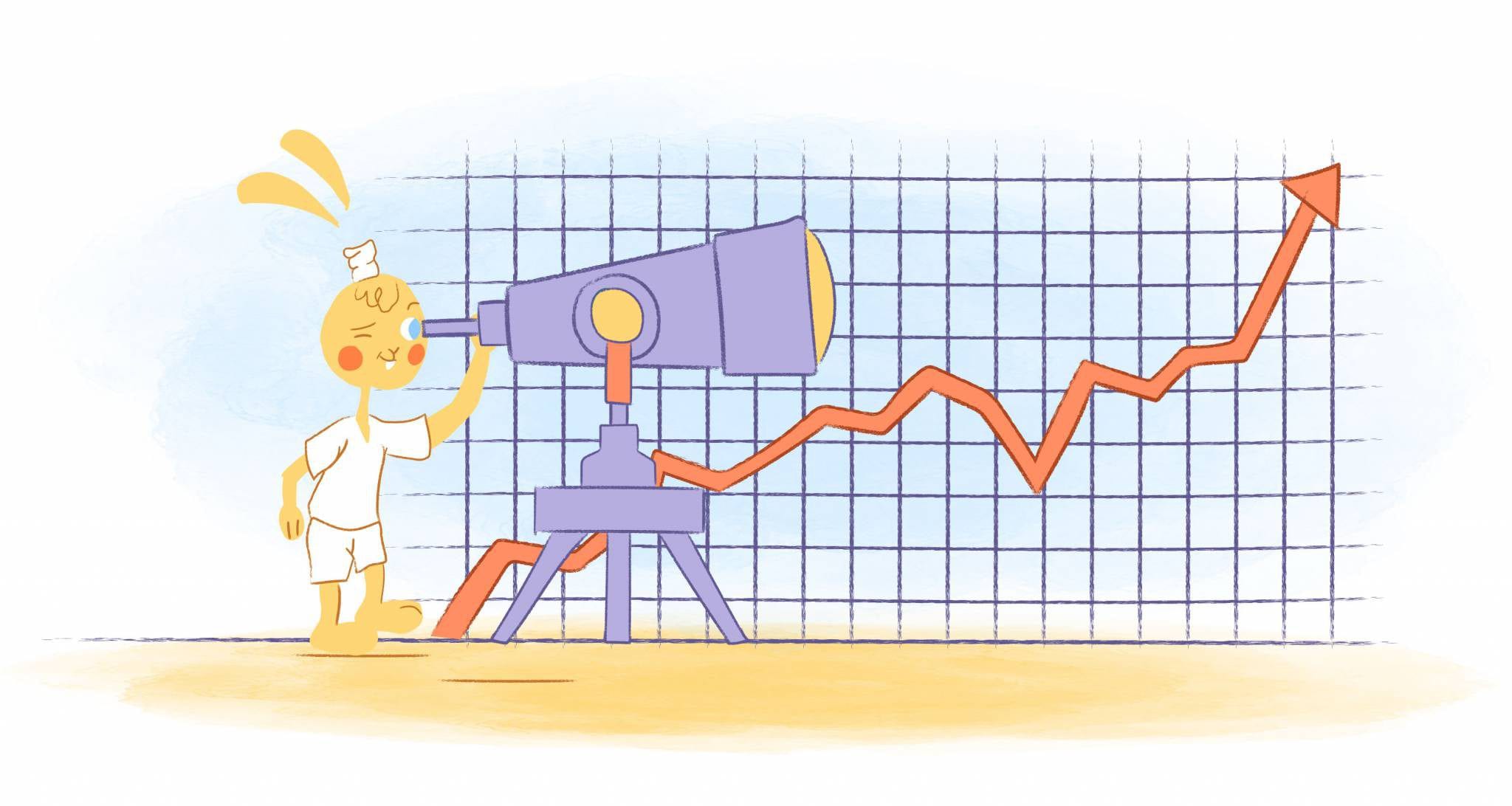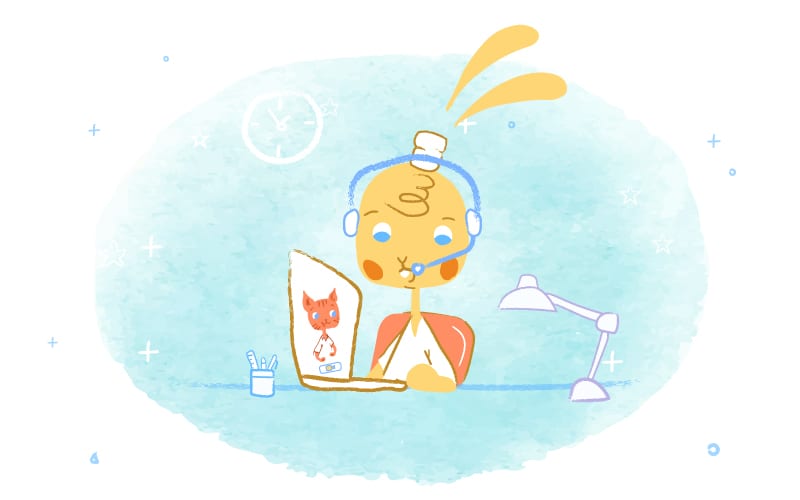

Sustainable Productivity, according to the Leadership Circle “measures the leader’s ability to achieve results in a way that maintains or enhances the overall long-term effectiveness of the organization. It measures how well she/he balances human/technical resources to sustain long-term high performance.”
To put that more simply, it’s continually growing and improving, embracing new ideas, and being optimistic about the future. That’s all well and good, but that can be exhausting. I mean I’m already worn out just thinking about all of that.
But, that’s not exactly what I think of. Instead, I consider sustainable productivity to be able to manage your energy and time so that you can maintain being your most productive self. Regardless, in either case, you can still use the following to make this a reality.
Forget goals. Focus on systems.
No disrespect to goals here. But, they can be problematic. Research shows that narrow goals are counterproductive as they can cause:
- A lack of intrinsic motivation.
- Reduce the desire to learn.
- Encourage you to focus on the short-term.
Moreover, according to James Clear, argues that you shouldn’t focus on goals because:
- At the end of the day, winners and losers have the same goals.
- Achieving a goal is a momentary change.
- Goals restrict your happiness.
- Goals are at odds with your long-term progress.
“None of this is to say that goals are useless,” explains Clear. “However, I’ve found that goals are good for planning your progress and systems are good for actually making progress.”
“Goals can provide direction and even push you forward in the short-term, but eventually a well-designed system will always win,” he adds. “Having a system is what matters. Committing to the process is what makes the difference.”
Sharpen the saw.
“Like a dulled saw cutting through a thick log, we produce diminished results when we use a depleted self to ‘cut through’ our daily grind and challenging projects,” explains Naphtali Hoff, PsyD. “To succeed over the long haul, be willing to take care of yourself.”
You may have come across this advice a zillion times. But, there’s a valid reason. If you aren’t in tiptop shape mentally, emotionally, and physically then you just don’t have the energy and stamina to be productive. So, make sure that you are:
- Eating nutritious meals and snacks.
- Drinking plenty of water and consuming alcohol and caffeine in moderation.
- Getting between 7 to 9 hours of sleep each night.
- Engaging in physical activity for around 30-minutes per day. Research has found that on workout days, participants increased concentration by 21% and 41% felt more motivated to work.
Additionally, find ways to cope with stress and anxiety such as meditation. You should also take plenty of active breaks throughout the day. And, you don’t forget to add a self-care routine to your schedule.
I’d also be remiss not to mention that you live a healthier lifestyle at work. After all, the office is killing you. Examples would be investing in a standing desk, air purifiers, and letting in natural sunlight. And, make sure to follow healthy habits like not eating at your desk.
Close “open” loops.
We all have unfinished business. It could be a to-do-list item, a meeting you need to schedule, or errands to run. Regardless if they’ve been added to your calendar or how far out in the future they are, these are called “open loops.”
While this may not seem like a big deal, I mean you will eventually get around to them, Amanda Bucci begs to differ in a Fast Company piece.
“Open” loops “quietly drains a lot of energy out of you? The reason? They take up valuable real estate in your subconscious.
“Instead of wasting effort by having your brain remind you of that thing you haven’t done, take an hour, day, or week to close the loop and do that thing,” suggests Bucci. For example, instead of letting clutter accumulate in your home or workspace, allocate a specific time to do it. When done, you’ll feel less stressed, get a rush of dopamine, and your mind will be much clearer.
However, for smaller tasks that you may not have in your calendar or to-do-lists, follow the 2-minute. It’s a technique made famous by David Allen in Getting Things Done. In a nutshell, if something only takes you a couple of minutes to do, just get it done and over with.
Get into a flow state of mind.
Psychologist Mihaly Csikszentmihalyi, defines flow as:
“Being completely involved in an activity for its own sake. The ego falls away. Time flies. Every action, movement, and thought follows inevitably from the previous one, like playing jazz. Your whole being is involved, and you’re using your skills to the utmost.”
But, your mileage may vary. Some folks, like athletes, call this “in the zone.” Whatever you dub this term, when in this “optimal state of consciousness” you’re focus and concentration are at a high level.
Best of all? You’ll feel like you’re on cruise control by you’re intrinsically motivated.
To be honest, though, it’s going to take some effort to get there. But, it’s possible to enter into a flow state of mind by:
- Eliminate distractions, like turning off your smartphone notifications. You should also make sure that you aren’t hungry or thirsty.
- Work at your prime time. For example, if you’re most productive in the morning then that’s when you should tackle your most important or difficult tasks. The idea is not to fight against your ultradian rhythms.
- Focus on work that you enjoy or find challenging. As for everything else? Delegate or outsource it.
- Aim for mindfulness. Sure, this is possible through yoga or meditation. But, you can also achieve this through breathing exercises or reflection.
- Connect to a clear purpose. In other words, know your why.
- Don’t flow alone. Try to collaborate with others to make your work more enjoyable.
- Seek feedback. Having feedback gives you the chance to make adjustments.
- Reap the rewards. Give yourself props when you’ve completed something. You’ve earned it!
Seize small opportunities.
I recently caught up with friends who just had a baby. They also have a 2-year-old. If you’ve been in this spot, you realize that it’s almost impossible to get anything done.
But, they told me that they make the most of those small and brief periods of free time. For instance, when both kids happen to be asleep they’ll tidy up what they. They might only have a limited amount of time, but this adds up.
You can use this concept as well. Let’s say that you have 15-minutes before a conference call. Use that timeframe to organize your desk, respond to an email, or schedule a lunch meeting with a colleague.
Develop agile habits.
According to Gallup, those who consider their company to be agile have reported higher rates of optimism and success. The reason? They feel confident that the business is more than ready to handle whatever is thrown at it — which is definitely an assist in a post-COVID world.
How can you and your organization become more agile? Gallup suggests that you:
- Empower employees and simplify processes to work faster
- Create an environment where employees can try out new ideas
- Increase capacity through cross-team coordination
Embrace work-life integration.
There’s been an emphasis on work-life balance for years. And, for good reason. It’s an effective way to preserve your health and wellbeing and avoid burnout.
Some people, however, prefer work-life integration.
“The reason I don’t believe in work-life balance is that it implies you can give equal attention to all parts of your life,” explains Amanda Abella in a previous Calendar article. “It also implies that all parts of your life are independent of each other.”
“Anyone who lives in the 21st century can tell you this simply isn’t true and trying to pursue it leads to even more stress,” adds Amanda. “There will be stages in your life when one area takes up more time than another and vice versa.”
“A more attainable goal is work-life integration,” she says. But, what exactly is it? Simply put, it’s creating synergy so that your career and personal lives work together.
How can you achieve this? Well, that’s going to be different for everyone. But, some suggestions to get started are:
- Put your priorities first. If that’s going camping with friends or completing an important project, identify your priorities and add them to your calendar ASAP.
- Establish strict blocks. You can’t be in two places at once. So, if you’re going to your kid’s soccer game then you aren’t able to attend that meeting at the same time.
- Use technology to your advantage. While you don’t want to be glued to your phone, it’s become an invaluable assist. For instance, when you’re home you can still respond to emails or messages — just don’t spend all of your free time doing this.
- Get creative. If you’re on a business trip, why not fold a family vacation into that? You might be busy for a day or two, but after you can enjoy some quality with your loved ones.
- Kick guilt to the curb. Create the schedule and lifestyle that you want. As long as you’re productive, it doesn’t matter what anyone else thinks.











John Hall
John Hall is the co-founder of Calendar a scheduling and time management app. He’s also a keynote speaker that you can book at http://www.johnhallspeaking.com.